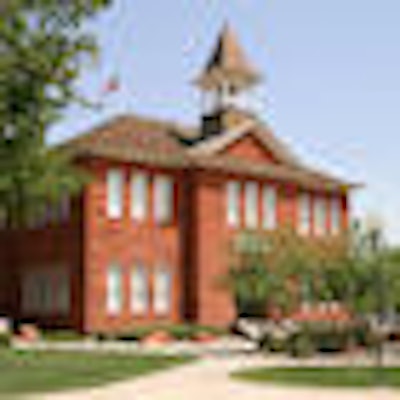
Fort Hays State University (FHSU) in Kansas is taking the first steps toward its goal of becoming the next university in the U.S. to offer a program designed to train midlevel providers.
Dental hygiene educators joined child advocacy groups at FHSU this week to discuss possible curriculums for a bachelor's degree program to train registered dental practitioners (RDPs), pending passage of a proposal currently being considered by the Kansas Legislature, according to a story in the Hays Daily News.
RDPs will perform preventive and routine services, such as cleanings and fillings, and will work in federally designated professional workforce shortage areas where Kansans have no access to dentists or safety net clinics that serve the uninsured and underinsured.
“We must act now to shore up our dental care workforce.”
— Edward Hammond, president, Fort
Hays State University
Under the supervision of a licensed dentist, RDPs could perform 34 specific tasks, such as extracting primary teeth, according to the story. They would be based out of a dentist's office, but they would also work in satellite locations.
Some 93 of the state's 105 counties don't have enough dentists to meet residents' needs, and 13 counties don't have any dentists at all, according to a statement by university President Edward Hammond, PhD.
"As a result, Kansans are at risk for suffering unnecessarily from preventable dental disease, missing school and work, and possibly incurring serious health consequences," Hammond said.
The shortage is a particularly serious problem in rural parts of the state, including western Kansas, which is FHSU's primary service area, Hammond noted.
18 months, 500 hours
The initiative, known as the Kansas Dental Project, is being spearheaded by Kansas Action for Children, Kansas Health Consumer Coalition, and the Kansas Association for the Medically Underserved.
As currently envisioned, the RDP program would be an expansion of the dental hygienist's certification; students would be required to complete up to 18 months of training and 500 hours of field experience and pass a comprehensive test, according to the Daily News.
The program would be similar to the university's bachelor's degree program in diagnostic imaging, which is based upon a two-year radiology-technology degree, Hammond noted.
The RDP program would allow students to complete their education with both their dental hygienist and registered dental practitioner licenses, while also offering hygienists currently in the workforce the opportunity to return to school and become RDPs, he explained.
"We believe this approach would produce the greatest benefit for patients and our state's workforce alike," Hammond said.
Dental hygienist faculty from Wichita State University were asked to draft possible curriculum and competencies for the prospective midlevel dental care degree. FHSU also is exploring collaborative possibilities with other universities to get the RDP program going.
FHSU estimates it could take at least two years for the program to get started since the proposal still needs to gain the approval of lawmakers and the Kansas Board of Regents.
The Kansas Dental Association and the ADA oppose midlevel providers, asserting that they jeopardize patient health and safety. But Hammond believes RDPs could provide treatment to many who currently have no access to dental care.
"Midlevel dental providers are being considered in many states that face dental care shortages similar to ours, and it is clear that these new providers will become an integral part of the dental care workforce," he said. "We must act now to shore up our dental care workforce. It is time for Kansas to bring in registered dental practitioners so that more Kansans can get quality dental care when and where they need it," Hammond said.



















